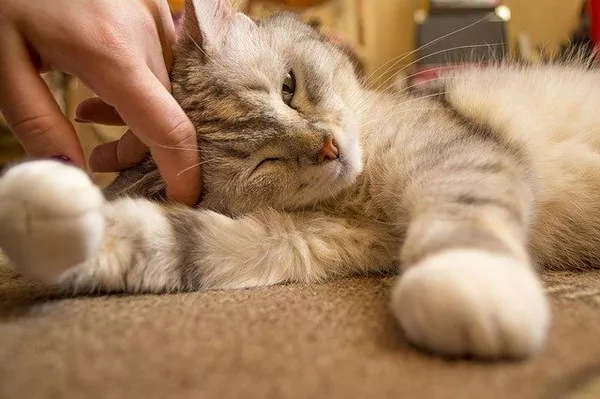Calico cats, with their distinct tri-color coats, are beloved by many cat enthusiasts for their beauty and unique personalities. As independent as they may seem, cats, including Calicos, have a delicate balance between their need for solitude and their requirement for companionship. Understanding how long a Calico cat can be left alone is crucial for ensuring their well-being. This article delves into the intricacies of leaving a Calico cat alone, balancing their independence with the companionship they need.
General Guidelines
The amount of time a cat can be left alone varies depending on several factors, including breed, age, and overall health. While some cats are quite independent, others require more human interaction to stay happy and healthy. It’s generally recommended by veterinarians that no cat should be left alone for more than 24 hours. Exceeding this timeframe can lead to a range of behavioral and health issues.
Factors Influencing Alone Time
Breed: Different breeds have varying needs for social interaction.
Age: Kittens and senior cats typically require more attention and care.
Health: Cats with medical conditions may need more frequent monitoring.
Calico Cats and Separation Anxiety
Calico cats, like other breeds, can suffer from separation anxiety. This anxiety can manifest in various ways, and it’s important to recognize and address these symptoms to prevent long-term issues.
Signs of Separation Anxiety
Destructive Behavior: Chewing, scratching, and destroying household items.
Restlessness: Pacing and inability to settle.
Weight Loss: Loss of appetite due to stress.
Excessive Vocalization: Increased meowing or howling when left alone.
Before deciding on the length of time to leave a Calico cat alone, it’s essential to rule out any underlying medical issues that could exacerbate separation anxiety. A visit to the vet can help ensure your cat is in good health and better prepared to handle alone time.
Breed-Specific Considerations
While Calico cats are known for their distinct color patterns rather than specific breed characteristics, it’s important to consider the general traits of the breeds that can produce Calico patterns. Some breeds are more social and require frequent interaction, while others are more independent.
Breeds Requiring More Interaction
Korat: Known for their affectionate nature and need for human companionship.
Devon Rex: Social and playful, often seeking attention from their owners.
Oriental Breeds: Including Siamese and related breeds, these cats are very vocal and social.
Breeds Tolerant of Alone Time
British Shorthair: Generally independent and can tolerate longer periods alone.
Birman: Calm and less likely to seek constant human contact.
Norwegian Forest Cat: Adaptable and can handle being left alone for up to 8 hours.
Setting Time Limits
Establishing appropriate time limits for leaving your Calico cat alone is crucial. Here are some general guidelines based on age and health:
Kittens
Up to 6 Months: Can be left alone for 2-4 hours.
6 Months to 1 Year: Can be left alone for up to 6 hours.
Healthy Adult Cats
1 to 7 Years: Can tolerate up to 12 hours alone, depending on their temperament.
Senior Cats: May require more frequent check-ins due to potential health issues.
It’s essential to tailor these guidelines to your cat’s specific needs and personality. Some cats may be more anxious or have medical conditions that necessitate more frequent attention.
Creating a Safe Environment
When leaving your Calico cat alone, ensuring a safe and stimulating environment can make their time alone more bearable and even enjoyable. Here are some tips:
Essentials for a Safe Alone Time
Fresh Water and Food: Ensure there is always fresh water available and enough food to last until you return.
Stimulating Toys and Puzzles: Keep your cat mentally engaged with interactive toys or puzzles that dispense treats.
Cozy Napping Spots: Set up comfortable areas where your cat can relax and sleep.
Clean Litter Box: Ensure the litter box is clean to avoid any hygiene issues.
Creating a routine and ensuring your cat has everything they need can help reduce stress and anxiety.
Alternatives to Leaving Cats Alone
If you anticipate being away for more than 12 hours, consider these alternatives to leaving your Calico cat alone:
Pet Sitters and Friends
Hiring a pet sitter or asking a friend to check on your cat can provide the necessary companionship and care. A pet sitter can also ensure that your cat’s needs are met, including feeding, playing, and cleaning the litter box.
Automated Feeders and Interactive Toys
Automated feeders can dispense food at set times, ensuring your cat has regular meals. Interactive toys can keep your cat entertained and mentally stimulated during your absence.
See Also: Do Calico Cat Eyes Change Color?
Feline Companions
Considering a second cat can be a good solution for reducing loneliness. However, this requires careful introduction and compatibility checks to ensure both cats get along well.
Conclusion
Balancing a Calico cat’s need for independence with their requirement for companionship is key to their overall well-being. While general guidelines suggest not leaving any cat alone for more than 24 hours, individual needs vary based on breed, age, and health. Recognizing signs of separation anxiety and creating a safe, stimulating environment can help mitigate the challenges of leaving your Calico cat alone. By considering alternatives like pet sitters, automated feeders, and feline companions, you can ensure your cat remains happy and healthy even in your absence. Prioritizing your cat’s well-being when planning time away is essential for responsible pet ownership.
Related Topics:


























